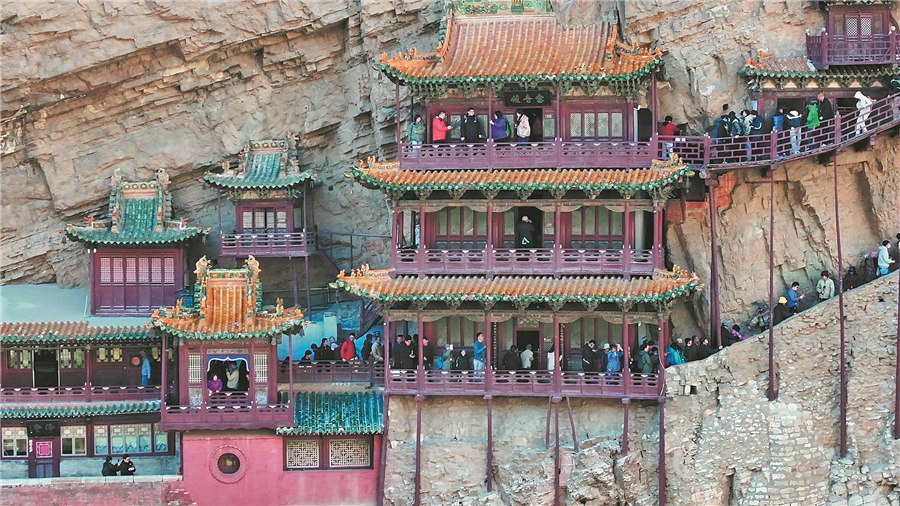

Officials at the Shanxi Culture and Tourism Department said that Shanxi was selected by the game's development team as the major destination for filming because it boasts some 28,000 sites of ancient buildings — the largest number in China's provincial-level regions. With preserved buildings constructed in a period from Tang (618-907) to Qing (1644-1911) dynasties, Shanxi has the richest varieties and styles of ancient architecture.
Developers at Game Science, the producer of Black Myth: Wukong, have also endorsed Shanxi's unique position in the preservation of ancient Chinese architecture and other cultural assets.
The developers' team, headed up by Yang Qi, art director of the game and cofounder of Game Science, had visited the sites of historical interest in Shanxi many times before the production of the game.
Yang's team began to visit Shanxi's ancient relics sites for preproduction research four years ago. During the visits, he paid special attention to the ancient structures, the statues and wall paintings featuring various Buddhist and Taoist legends in 20-plus locations in Shanxi.
His team used 3D modeling and shot videos for an astonishing number of figures and images of these sites, under the approval of Shanxi's cultural heritage authorities.
"The figures of 10 Yama Rajas (Kings of Hell) in Chongqing Temple in Zhangzi county, the 24 devas (angels) in Tiefo Temple in Gaoping city, the 28 constellations in Yuhuang Temple in Jincheng city, are all the amazing things that I can borrow inspiration from," Yang said in his Weibo account, just naming a few.
The team's extensive and intensive journeys in the province would result in an extravagant show of Shanxi's culture and tourism throughout the game, which was what local cultural and tourism officials expected when they received the team's visits. So they showed strong support to the team.